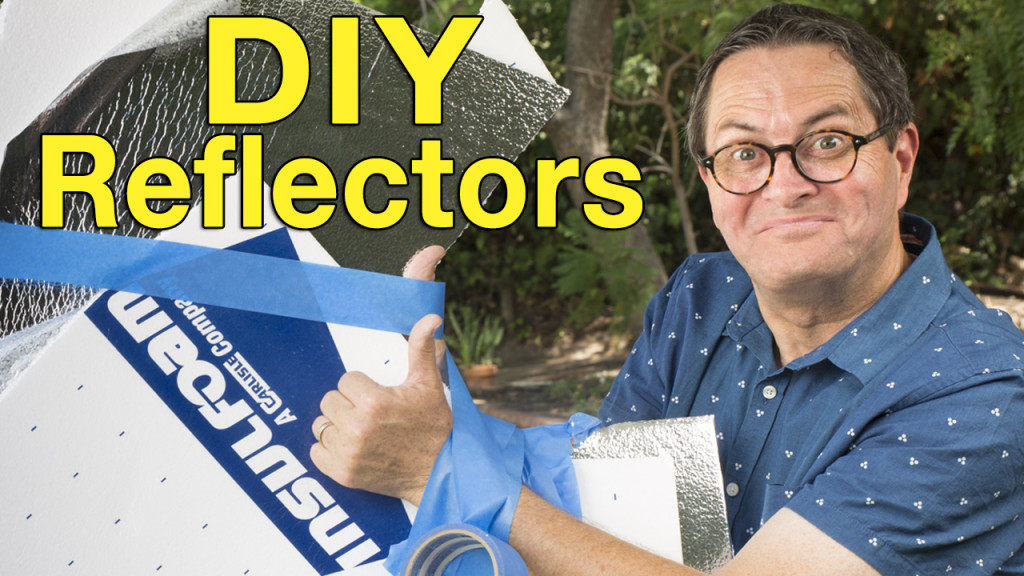Reflectors are a great entry point into the world of lighting so today on The Slanted Lens, I am going to show you how to make one of your own. Let’s get started!
Bead foam reflectors have been used on photography and movie sets for years because they are cheap to make, easy to use and really effective. They are one of my favorite kinds of reflector because of the nice, soft light they give off. Just to make sure we are all on the same page here, bead foam is a type of styrofoam that looks like small foam beads pressed together – think cheap ice coolers.
I got a sheet of bead foam from Home Depot that measured 8”x4”x1” with shiny silver on one side and white on the other with some blue writing. This size is too large to work with or transport easily so the first thing I will do is cut the sheet in half to create two 4” square pieces. It would be difficult to remove the paper with the blue writing from the other side of the foam and while I could spray paint it, there is a quicker and cheaper way. The silver lining peels off the foam pretty easily to reveal clean, white foam. Leaving one of the squares with the silver lining intact, I peeled off the silver from the second square.
Now, I am going to put both squares together with the blue writing facing in and tape up the edges. You can add a spray adhesive here to stick the two pieces together better, but it isn’t necessary. You can use gaff of duct tape to tape the two pieces of foam together. It does not matter what color the tape is since it is just keeping the pieces together and preventing the bead foam from falling apart.
That’s it. Really, it is that simple to make a reflector. You can even skip the cutting and get sheets that are 4”x3” or 2”x3” if you prefer.
Now that you know how to make a reflector, it is time to learn how to use it properly. I have a new digital download available as part of the TSL Education Series that will teach you everything you need to know about reflectors – why to use them, what the different colors look like on a face, how to work with them alone, and 12 on-location setups to show you exactly how to use them. Go to https://theslantedlens.com/
Let me teach you how to start manipulating and shaping light and improve your photos and videos with one simple tool: a reflector. As always, keep those cameras rollin’ and keep on clickin’.


